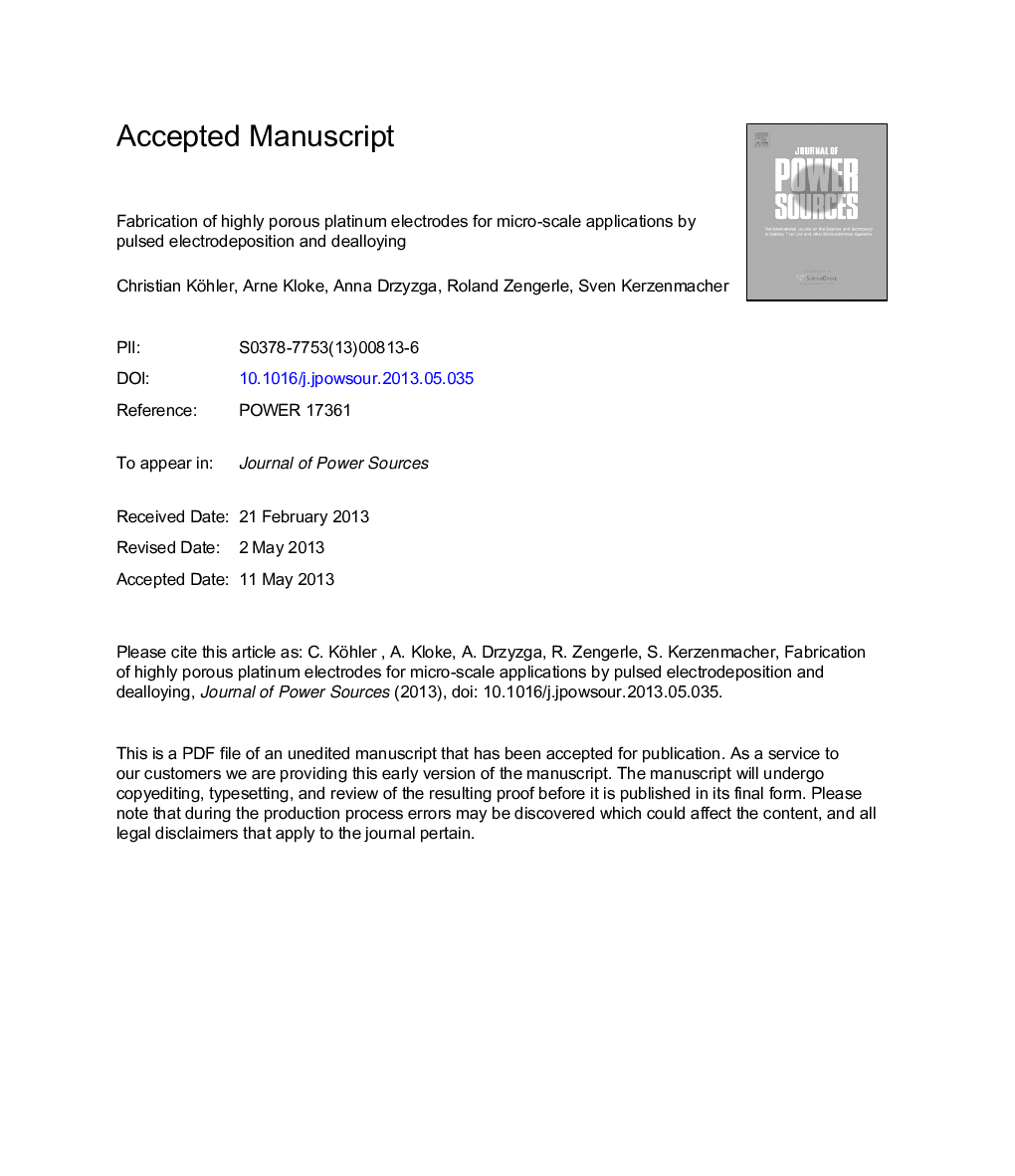| Article ID | Journal | Published Year | Pages | File Type |
|---|---|---|---|---|
| 7739867 | Journal of Power Sources | 2013 | 39 Pages |
Abstract
We present the implementation and optimization of a novel electrodeposition method for the fabrication of highly porous platinum electrodes. It is based on the co-deposition of platinum and copper and the selective dealloying of copper in a pulsed manner. The new process yields mechanically stable platinum electrodes with roughness factors of up to RF = 6500 ± 700, compared to the state-of-the-art cyclic electrodeposition method this corresponds to an improvement in RF by 111%. Furthermore the time demand for fabrication is reduced by 59%, whereas the platinum utilization is increased by 53%. The method is particularly advantageous for applications such as micro fuel cells since it enables the precise deposition of catalytically active electrodes on micro-structured conductive areas. In this context the novel platinum electrodes show higher current densities for the oxidation of formic acid and glucose than state-of-the-art electrodes. In terms of methanol oxidation their catalytic activity is comparable to commercial direct methanol fuel cell (DMFC) electrodes, fabricated from Pt-Ru nanoparticles dispersed on carbon black.
Related Topics
Physical Sciences and Engineering
Chemistry
Electrochemistry
Authors
Christian Köhler, Arne Kloke, Anna Drzyzga, Roland Zengerle, Sven Kerzenmacher,
